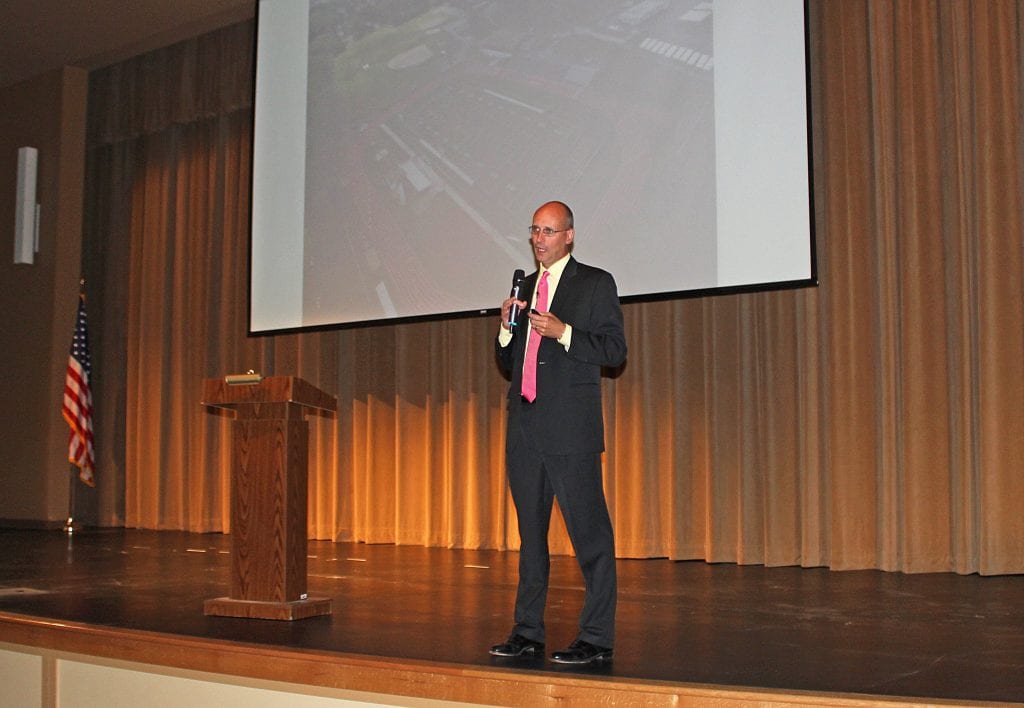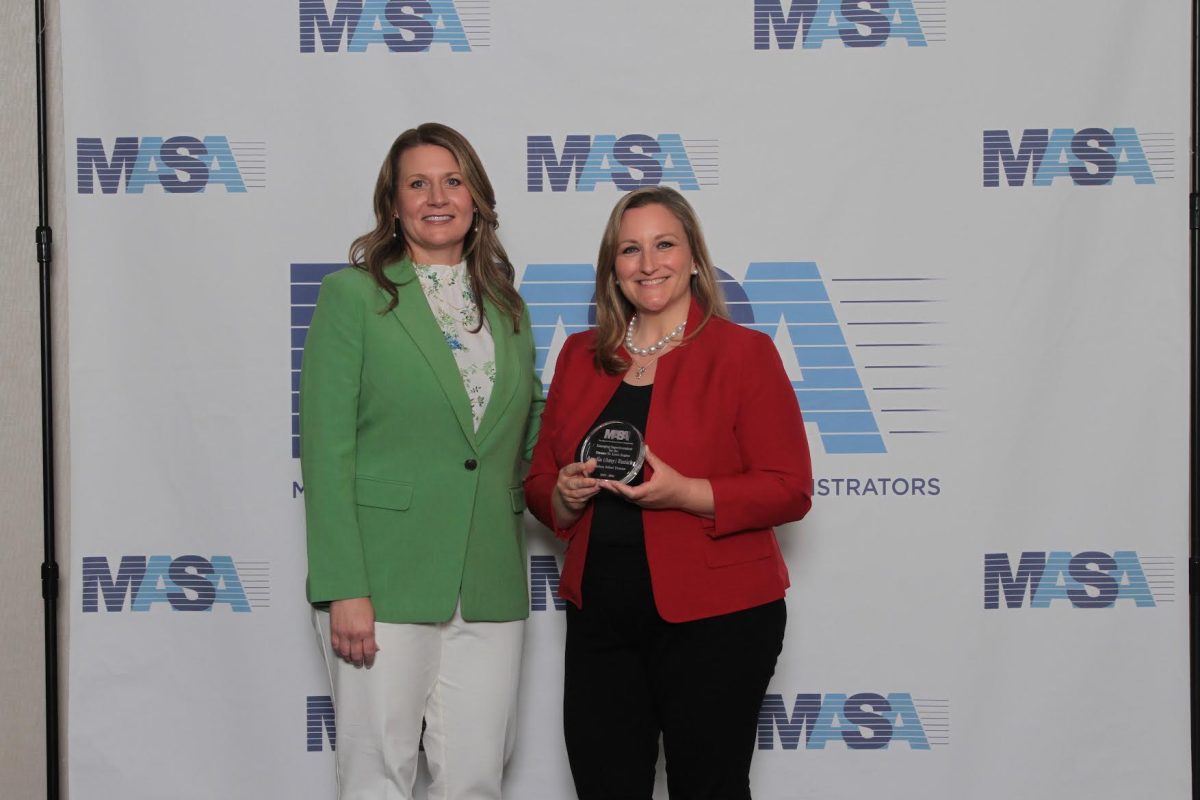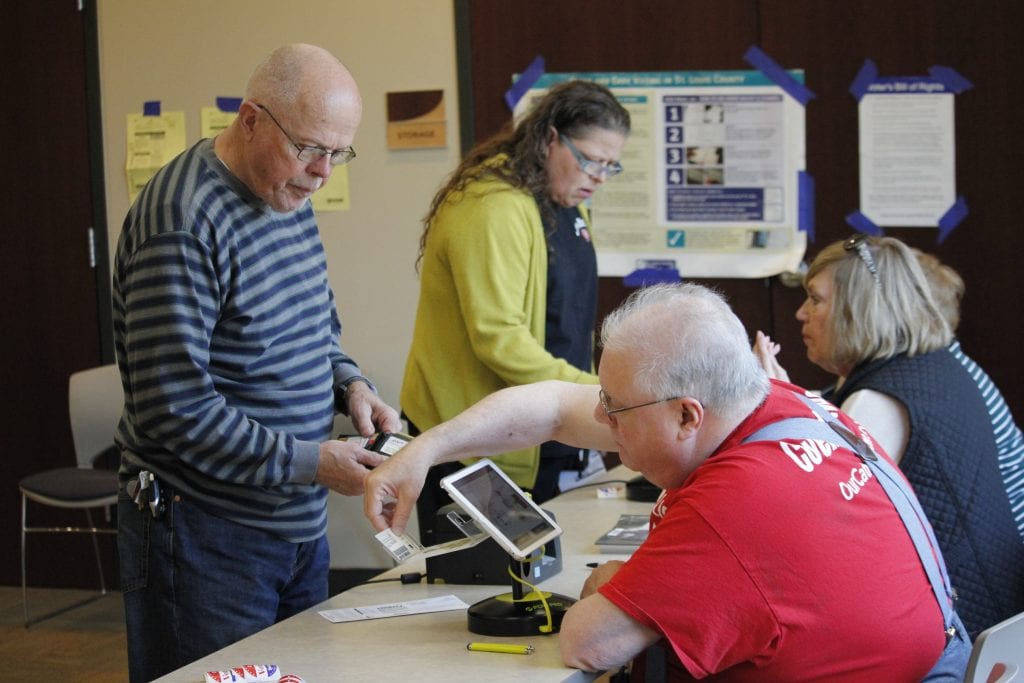By Gloria Lloyd
Staff Reporter
news3@callnewspapers.com
In his third annual Mehlville State of the District address last week, Superintendent Chris Gaines recapped the many headline-grabbing changes in the district last year and what could be in store for students from the smaller behind-the-scenes changes he expects this year.
Unlike Gaines’ packed-house discussion of Proposition R in his first districtwide speech two years ago, turnout for his Sept. 18 speech at William B. Nottelmann Auditorium at Mehlville High School was poor, a fact that he acknowledged in his opening lines.
“It’s full,” Gaines said, then added after a pause, “Of empty seats tonight.”
The sparse crowd heard the superintendent outline big ideas about where education in Mehlville is going. In future years, he may deliver the State of the District by video, which could be more easily viewed on the go by busy parents, he noted.
Last year was a “year of engagement,” Gaines said, with the district asking for the opinions of parents and residents on a series of issues, including the calendar, block scheduling, redistricting and facilities.
The calendar had become an annual battleground between teachers and the Board of Education, with some board members and parents pushing for a longer school year or fewer early-release days and teachers preferring that more time be spent on professional development. Calendars were sometimes not approved until April, months before school started.
But with surveys from parents showing that they want the school year to start in August rather than after Labor Day, want snow days built into the calendar and do not like weekly early release days, the Calendar Committee last year was able to get two years’ worth of calendars approved with little dissent from teachers or the board.
The committee is already starting to build the 2019-2020 calendar using that same foundation, Gaines noted.
But other issues did not go as smoothly.
Parents and students at both high schools largely resisted any change from the block schedule that the high schools have had for two decades.
Changing from block schedule to traditional was initially suggested by some teachers and members of the public in a cost-savings survey, and the district found that a switch from block to traditional would have saved more than $1 million a year.
The savings comes because the required study halls that take up 12 percent of block classes at the high schools — called TAP at Mehlville High School and ANP at Oakville High School — are supervised by teachers who are not teaching classes during those times. That requires more teachers overall than another schedule that doesn’t have TAP or ANP.
The move away from block scheduling was tied to Gaines’ push to add more innovation, internships and early college options at the high schools, under an umbrella of programs called “My Path.”
“We were looking at doing some things soon and into the future that needed a schedule that was more flexible than a block schedule and did not take the same amount of human resources that it takes to execute a block schedule, especially one with TAP and ANP,” Gaines said.
A Schedule Review Committee comprised of administrators, teachers and parents examined all the options and decided to move toward a “flex” schedule where some classes would be taught as 90-minute block classes and some as more traditional 45-minute periods. This year is a transition year to help teachers and students get a feel for 45-minute classes, with one day a week, the “C” day, serving as a traditional schedule where all classes meet.
Under the flex schedule, “some classes may meet every other day, some classes may meet every day, depending on the needs of that particular class,” Gaines said.
More than 90 percent of students were able to stay at their school for redistricting, which was necessary to free up space at overcrowded schools and clean up feeder patterns so that more elementary students continued to middle school and high school with their same classmates, he said.
When the district asked parents at each school about facility needs, the overwhelming concerns were about landlocked schools and lack of parking. And in Oakville, parents want an auditorium.
“We’ve especially got that rising to the top in the Oakville area,” Gaines said.
With funding from 2015’s 49-cent tax-rate increase Proposition R, the district stepped up professional development for teachers and hired reading interventionists, as promised to voters.
“Outside the Prop R dollars, we began to look at and imagine: Are there things we could re-imagine the way we use our dollars, reallocate other purposes to other resources?” Gaines asked. “And we’ve done that in a number of ways in order to expand opportunities for kids.”
With that type of thinking, the district shuffled resources around to open Mosaic Elementary with one-time startup costs of $500,000. The school of innovation is the first of its kind in the St. Louis region and one of only a few in the Midwest, and people have contacted Gaines from all over the country to come visit when he begins allowing outside visitors second semester.
The district also took innovative practices to the high school with My Path.
“My Path is around this concept that everybody doesn’t have to follow the same path to a high school diploma,” Gaines said. “It allows kids to show mastery of a subject beyond just time in a seat.”
While adoption is slow this year, early indications are that as word spreads, next year will double participation in My Path options like online courses, classes at St. Louis Community College, early college classes and the CAPS internship program with Affton High School.
The district will work to expand those innovative options to the middle schools this year, with Gaines emphasizing that the year is young. In 23 days of the school year before the State of the District, Mehlville opened a new school, placed as a statewide finalist for best early childhood education, raised over $17,000 for hurricane relief and wrangled all 10,000 students outside for a day of learning around the eclipse.
“We’ve done a lot in that 23 days,” Gaines said, emphasizing that 87 percent of the school year is still to come.
“If you look at where we are today, it’s kind of the same as last year but on a smaller scale,” moving toward always improving options for the 10,000 Mehlville students “looking at the sky and imagining what their possibilities might be and what their future could be,” Gaines said.
Skeptics might note that jobs of the future have not even been created yet.
“But if we create the conditions where our kids can be problem-solvers and be learners and strive to do their best, then I think we’ll be in good shape and we’ll have created a school system that others can envy,” Gaines said.




























